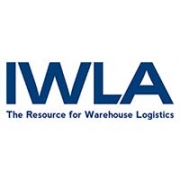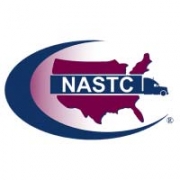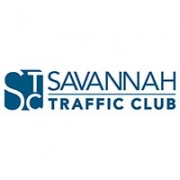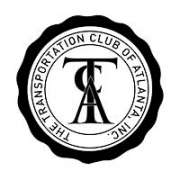See the latest publication of “Resource Guide to Ports in Georgia” below.
Our very own Lee Smith, President of the Savannah Traffic Club is featured on page 14.

See the latest publication of “Resource Guide to Ports in Georgia” below.
Our very own Lee Smith, President of the Savannah Traffic Club is featured on page 14.

While most end of the year competitions are televised, the end of the retail game is reported on. The last quarter of the year is make or break time for retailers and used to be nothing if not predictable, The last few years the outcome has been less predictable but surprisingly profitable. This year had retailers on the edge of their seats and biting their nails. Rising costs of materials and transportation already cutting into profits makes this year’s outcome a literal deal breaker for many businesses.
Kick Off
Traditionally Black Friday (or the superbowl of retail) kicks off the holiday retail shopping, but this year several factors including inflation concerns and inventory pile ups had retailers feeling apprehensive. This year marked the third year since covid shut downs in early 2020 and the ability to predict the future based on the past. The hurdles to profitability this year were not the shut downs but the cost of living increases consumers have been struggling with. The cost of basic necessities like rent, gas, and eggs have been a point of contention, and yet Black Friday saw 72.9 million shoppers in retail stores and 11.3 billion spent on Cyber Monday.
Let’s Make a Deal
The question is, how did the retailers lure the cautious consumers into their shops? Deep, deep discounts are what saved the day. Consumers are cautious but still have needs and wants to address so they are looking for the best deals. The percent of shoppers who bought discounted items in 2021 (38.4) rose to 56.3 in 2022. Companies like Target and Walmart started their Black Friday sales in early November. Stores like Dollar Tree and Family Dollar saw increases this year as shoppers found their way to more affordable options.
I’ll Gladly Pay You Tuesday for a Hamburger Today
Almost half (49.5) of the Black Friday purchases were made on credit cards. There was also a surge of buy now pay later options available this year and consumers took advantage. A third of Black Friday consumers used loans, credit lines, or installment payment plans and 10.2% of online shoppers used buy now pay laters. Research shows that millennials and Gen Z were the most likely to use the buy now pay later options. 48% of poll respondents in that demographic reported they used those services while only 14% of the baby boomers did.
The House Always Wins
The buy now pay later model is not a new concept. The average American holds $6004 in credit card debit already. Stores that rent to own everything from furniture to electronics are flourishing. The BNPL concept has been shown to cause more bank overdraft charges, interest charges, credit card late fees, etc. for those who use them. The negative impact to pocket books and credit certainly add up for the consumer.
Thrift Trap
The basic math looks like a win. Online sales rose by 7.4% and physical store sales increased by 6.6% almost exactly what was predicted (between 6-8%) . They were hoping for more due to the increased cost of goods and quality labor. There are new trends to contend with as they look to next year. The average American bought gifts for 6 people in 2021, for 2022 it was down to 4. That may not sound concerning but if they bought gifts for 4 people this year on a buy now pay later budget they may reduce that number down next year. Discounts are going to continue to be the way to the heart and pocket books of the cautious consumer.
The return of the onsite convention
The first Modex convention I attended was about 10 years ago and I was blown away by the vast set up! There were vast rows of vendors each with a more elaborate booth than the next. Models graced replicated showrooms handing out literature, hosting coffees or happy hours. Mini warehouses displayed the latest in automated technology and products. Marketing swag flowed freely as each booth was packed with more potential clients then the salesforce had time to speak with. Some of the spaces even had multiple floors with seating to make deals. Networking was easy as the aisle were so packed that it was impossible not to meet the attendees from all over the world. Modex hits the Atlanta World Convention Center every two years with the exception of 2020. This being the first time since Covid I was curious to see what this year would yield.
Modex brought the sauce
The Modex convention centers around innovations for the supply chain industry but it is also where people come to network and most importantly make deals. This is part of what makes some of the booths so elaborate. This year was no different when it came to levels of floor displays. Everything from regular sized booths to recreated mini warehouses where they could show off the latest technology filled the convention center showroom. . ( my favorite had a little putting green that I DID NOT win prizes at!) There were plenty of stair case included two or three story show rooms with seating for deal negotiating. This year they added a “back yard barbecue area” inside the convention center with food trucks, corn hole, basketball and football arcade simulators and locker phone charging stations, the perfect place to decompress. They had guest speakers including Shaquille O’Neal and a an additional networking event with comedian Preacher Lawson. In many of the displays one could view the latest and greatest innovations for safer more productive workplaces.
Missing in Action
The only thing missing this year was the crowd. In the past it was nearly impossible to get from one side of the convention to the other, the crowds of people checking out all the trends blocked the aisle. This year there were a few people strolling down each aisle with plenty of maneuvering room. Restricted travel (people come from all over the world to vend and attend Modex), continued covid fears and perhaps more unknown factors made this year’s show floors feel empty. There were certainly advantages and disadvantages for both the attendees and vendors.
Glass half full
One of the clear advantages for the attendees was more mobility and easier viewing of products. There were still clusters of people in a few locations. One booth had a retired football player signing free footballs and another had created a game show, they both gathered a crowd. The best booth I attended had a wall sized space invader game integrated with a hand scanner they were selling, they had no line at all so I was able to walk right up.. The sales people had more time to chat and I got to see some pretty amazing innovations and some that were just for show. I watched an automated device pour a beer into a glass, it was quite a process but took a bit more time than one might spend pouring it themselves. The highlight for me was one of the salespeople inviting me to the private vendor party they were having that night at the Mercedes Benz Stadium. They rented out the whole stadium, had a band, food, drinks and private tours which means I might have or might not have danced in the end zone!
The other half of the glass
The concern I had was for the vendors but surprisingly the ones I talked to had done incredibly well over the four day convention. One vendor said he made everything he needed to on the first day. That may have been luck of the draw on who I talked to but they indicated that the attendees who were there came ready to make deals. Maybe the sparser crowd helped them to identify who to pursue for sales. In terms of networking it did impact my overall experience. Networking with those I am viewing a booth with is an easy way to meet someone new. I still had plenty of people to speak with but I had to work a bit harder to make those contacts. The energy was still there in terms of excitement over the innovations but still felt a bit hollow.
What the future holds
With covid came a slew of expressions we all wish we could not hear again. The “new normal” is one that I am sure we are all over hearing but that is where we are. Events have restarted but they are not quite what they once were. Maybe they will get back to what they once were or maybe they won’t ever be exactly the same. We have adapted to many new ways of doing things, and events may have some modifying necessary for us to get the most from them. As for the new innovations check out the Outsource Logistics Instagram for videos in the next few weeks!
There was a time, not long ago, that it was an employer’s market. The need for jobs gave employers the ability to sort through an influx of applicants to pick the most desired, In the last few years that influx was already dwindling and with covid has completely dried up. Government assistance was short lived so the question is where did the employees go and when will they return? When the pandemic first reared its ugly head in March of 2020 everyone was hit by the same storm but weathered it inside different boats. Some relied on government assistance or savings, but a good portion found another source of revenue or learned to live with less. The other sources of revenue included the upstart of new businesses and the development of side hustles into main sources of income. Companies like Uber eats, and door dash got many people through the worst part of the pandemic, and this should have been a temporary fix until the workers were able to return to work. When businesses re-opened, they did so in stages, and many found that the employees were not waiting to return. While the shortage seems, new experts say the workforce was already changing due to lower birth rates every year even in heavily populated countries. There are going to be more employees seeking work though as prices drive those who lived on less and the side hustlers back to a more traditional income. The question is how to shift them to logistics which by its necessary structure is far from freelance?
Bubbles Burst
The bubble is bursting on the side- hustle economy. When the government assistance ended the workforce should have returned but many looked to those same apps designed for supplementary income to be their main source of income thus saturating the market. With less revenue to be made in unconventional ways and workers learning that the wear and tear on their vehicles is not worth the compensation many are looking to return to more conventional streams of income and if employers want to be the front runner employer, they need to look at what the less conventional routes had to offer pre-covid.
Flexibility in Schedule
The main thing people enjoy about gig work is even if they have to work more hours for the same type of income, they choose when. Some businesses cannot offer a fluid schedule, but there are many that can. Some warehouses are now staying open on the weekends and offering a day off in the week instead. It would be difficult for most businesses to do an extra full day of the week of operations, so they could start with one day of the week with adjusted hours or you could have the HR department work with employees on time needed for appointments that could be made up on the selected days. The traditional work week does make it hard for people to get to appointments or do errands so if there is any way to provide more flexibility that would help appeal to the new workforce. If businesses are able to expand their daily operating hours, they could allow workers a variety of in times versus everyone coming in at once. Ultimately, it’s a stretch for most HR departments but may be worth the increase in viable candidates.
Immediate pay
One thing most side hustles offer is same day pay. Most have a card that you can opt to be paid right away for work done and a lesser percentage than if they wait a few days. For people struggling financially the ability to be paid the same day can be very appealing. This may also stretch the capability of the payroll department but there are a plethora of apps to assist with setting up this payment structure. Even weekly pay may be enough incentive for those returning to the work force from a daily pay mindset.
Independence and Ownership
The truth of the side hustle is you still have some sort of employer and accountability. A worker driving for lyft is still working as an independent contract for lyft. Drivers rate them, the company tracks driving habits and drivers are given a score. The score determines the quantity of work they get. The difference is that there is not a human face to the management which creates an illusion of independence. This will be a hard feature for businesses to replicate but if there is an opportunity to create a feeling of independence at work that would benefit businesses.
Filling in the Gaps
One of the downfalls of gig work is the lack of benefits for the workers. There is no health insurance, dental insurance or 401k for independent contractors. The work is also inconsistent. Drivers can go hours unpaid. Utilizing this information and really highlighting those features to applicants may pull in the longer term minded. The options for employers are to either embrace the gig culture and use apps for temp workers or find a way to woo the workers back. This is going to be an incredible challenge for the logistics industry. However, those businesses that get creative may be ahead of the game as the work forces shifts.
Some wait for their ship to come in, the logistic community surrounding the Georgia Ports Authority waits for the prior year’s numbers to sail in! The waters were rough, and the storms raged during 2020 but the Port still managed to not only endure but still grow. By moving 4.68 million twenty-foot equivalent container units they outpaced 2019 by 1.8 percent. This may be significantly less growth than anticipated in 2019 without all the criteria we now have available. Pivot, adapt, COVID-19, and zoom are on the top of everyone’s “words I wish I never had to hear again” list but the logistics community did all that and not only maintained the survival of a grateful nation, but still managed to grow. The nation faced its most challenging year and there is still a road to recovery, however it is important to take the time to acknowledge the positive developments and the people who made that possible.
Counting Containers
The year started off strong despite a slowdown in shipping due to trade concerns and covid hitting overseas in late 2019. The Savannah Georgia Port Authority still started the year off by tallying the record-breaking movement of 4. 6 million container units. 2019 saw an increase of 250,000 TEUs from the year before totally 5.6 percent growth.
Global Trade
February continued strong with Georgia Foreign Trade Conference where the impact of trade relations with China were addressed and the positive way the Georgia was positioned was highlighted by Gov. Brian Kemp “With low unemployment, strong consumer confidence and a new trade deal with China that has already resulted in new poultry exports, Georgia is poised to be a bright spot for the nation in the coming year,” Kemp said. “In 2020, we expect port activity, and the logistics industry in general, to remain a strong economic driver, and an important support network for farms and factories across the state.”
In like a lion out like a lamb
March delivered three Neo-Panamax ship-to-shore cranes to the Port of Savannah bringing its total to 36. (highest number in any single terminal in north America) The cranes will make it possible to handle four 14,000-TEU vessels at the same time by 2023. Due to an increased need for storage options the port added 400,000 TEUs of container capacity.
Mega Rail Milestone
A project that has been in the works for four years accomplished a major milestone in April. The GPA added 9 working tracks! GPA Executive Director Griff Lynch took the time to acknowledge the U.S Maritime Administration and the grant that made it all possible, “On behalf of the Authority, I would like to thank Admiral Mark Buzby at MARAD for his support of our vision for the Mega Rail terminal,” Lynch said. “We are also grateful for the leadership of Gov. Brian Kemp, and to the Georgia Congressional delegation, particularly Sen. David Perdue, former Sen. Johnny Isakson and Congressman Buddy Carter for their unwavering support throughout the grant application process and implementation of this critical project.”
Go deep
The dredging of the Savanah is a vital project that has continued during the pandemic. There is an extraordinary four dredges are working in tendendum 24/7 and they have reached a new depth of 47 feet. This takes the entire project to approximately 62% complete. The outer harbor has been deepened to 49 feet at low tide. According to Col. Daniel H. Hibner, commander of the Corps’ Savannah Distict “The cooperation we receive from GPA, our dredging contractors, the harbor pilots, the Coast Guard and others demonstrates the dedication this community has for deepening the Savannah harbor.”
Two Cranes
The GPA increased its container-handling and berth capacity when two new mobile harbor cranes were received. The cranes have a lift capacity of 125 tons and can move containers or breakbulk cargo. The arrival of the cranes via barge signifies an ability to grow container handling services.
Big Ships
In September, the CMA CGM Brazil sailed into Savannah. This is the largest ship we have hosted so far with a capacity of 15, o72and the arrival was celebrated by the entire city of Savannah include GPA Executive Director Griff Lynch. “As the largest ship ever to call the East Coast moves 5,600 TEUs on and off the largest single container terminal in North America, it is clear that our efforts to expand capacity and reach are taking hold,”
Christmas Miracles
The challenges of delivering Christmas and keeping toilet paper on the shelves resulted in the busiest December ever. 447,525 TEUs passed through the port for an increase of 24 percent! Rail volumes also grew 16.4 percent and helped to cap a successful year in our rail system.
Our Moment
The businesses surrounding and supporting the port were all a part of fostering the growth and keeping Americans supplied during the pandemic. The entire logistics community should take a moment to be proud of their team and all that they have accomplished. Outsource Logistics rolled into 2020 by rolling out Savannah’s first Semi-Autonomous trucks. We were featured in the Savannah Morning News and on several news stations. (check it out at the following link: https://www.savannahnow.com/photogallery/GA/20200103/BUSINESS/103009992/PH/1) Next month we will feature a look at those trucks and how they have impacted our fleet. March brought obvious challenges, but we took the opportunity to make positive safety changes and found innovative was to overcome the challenges. In April Outsource added 500,000 feet of temperature-controlled space in the Pooler,GA area! In July our new updated website hit the internet, please check us out on Outsourcelogistics.com We had many employees start the path of owner operators and several cross the finish line! We celebrated years of service from one to twenty and we could not be prouder. Kevin Jaynes celebrated 5 years as did David Kugelmann and David Nelome. John Ghee celebrated 10 years and Tony Zeman celebrated 20 years with Outsource Logistics. Thank you for all your hard work and dedication! When Lee Smith, Co-Owner of Outsource Logistics was asked what the key to success for Outsource was he answered, Outsource Logistics Savannah operation has grown in 6 years from 28,000 sq ft to presently 1,440,000 sq ft. Great employees and good customers have allowed Outsource Logistics to continue to grow. The latest addition at Outsource Logistics 1 Knowlton Way Savannah Ga is a pinnacle moment at Outsource. A 785,000 sq ft warehouse. Our entire team is very proud and excited about the future of Outsource Logistics. Our core value is to be good at what we do and to do it well. The future is bright, and we are looking for new members to add to the Outsource Team.” Paul Everett, Co-Owner of Outsource Logistics also expressed gratitude for the team, “The Valdosta and Tifton operations continue to grow at a record pace as well. We added another 240,000 square feet in Valdosta and 90,000 square feet in Tifton to accommodate our customer’s needs. We continue to onboard quality CDL drivers and owner operators to get our customer’s products delivered in a timely manner even in the wake of a tremendous capacity shortage. I am so proud of the teams at all 3 locations! Our growth is an illustration of what happens when you always put the customer’s needs first and provide a quality service.”
In the Wake
Now is the time for the logistics community and our world community to come together and rebuild. The growth here is a light house that we can all strive to reach. The teams that have produced this growth are incredible and will be up to the challenge.
Novel, unprecedented, no one could have planned for are all words and phrases we have been hearing since the beginning of the pandemic early last year. The optimism we had in March misled us into believing that we would be back to normal by summer, or by fall, or by 2021. Now we are hitting the predicted second wave of the virus and it is no longer novel. While the news about vaccines and treatments is a bright spot for the future currently the hospitals are filling, and the panic buying has resumed. Last March changed the way consumers viewed the supply chain. Most of us just bought the things we needed without a second thought to how they arrived on the shelves, and then it all changed. Suddenly a system we took for granted had to be replaced with a new way of doing things. We learned how much we rely on the supply chain to sustain everyday life. According to a survey done by the Capgemini Research Institute 66% of supply chain organizations say that their strategy will need to change significantly to adapt. The first wave caused disruptions and issues that are not yet resolved, with 80% of global companies have reporting a negative impact from the pandemic. How can the lessons we have learned help us through the second wave?
Staff Safety First
When covid hit in March essential business had to remain open or our world would have completely collapsed, and this mandated new safety procedures. Like most businesses Outsource Logistic implemented new policies to operate with little to no contact, created sanitation bags to keep drivers safe and even provided snacks for drivers so they would need to make less stops into convenience stores. They hired extra staff just for sanitation and did everything they could to ensure the safety of their staff. The logistics industry has always made safety a top priority, but some businesses are more stringent than others. While we have not seen relief from the virus a combination of distraction from the election and fatigue from distancing has caused many to let their guard down. Hopefully, this is not true of the essential logistics industry, but if its waned even slightly now is the time to revisit those best practices. Companies that stay vigilant now will save the health of their staff and incite loyalty from a staff that feels cared for. There are so many facets of covid that are beyond our control, keeping our staff as safe as possible is in our hands.
Change was going to come
The shift to online shopping was increasing year over year prior to covid, the pandemic just accelerated it to a point of no return. Hold outs that enjoyed retail shopping are now proficient at online shopping, they are likely to convert to this for future use. Its not just the United States that has shifted to online ordering due to the pandemic, according to forecasts 55% of consumers in China will continue shopping online even after the restrictions are lifted. The retail businesses that have fared the best have already shifted to buy online, pick up in store models which created a new challenge for the logistics industry. The rapid fulfillment and delivery demands were met with changes to storage. Closer proximity of warehouses to the products destination is now key and many stores are turning into their own distribution centers for pick up and delivery orders. Retail stores are quick to blame the supply chain for any issue’s consumers are running into which fuels the panic buying. While the interruptions may be a significant issue retailers are facing there are elements that they can control. Retailers are still struggling to know what to order so items are not sitting on the shelves taking up space or running out of desired items. They can tighten up their inventory and ordering process for instore items and time their orders more proficiently. One option many retailers are utilizing is the limit of items each customer can buy on items like toilet paper and water. It is likely these restrictions will continue through the next wave.
Global Logistics
One thing the pandemic highlighted is how connected we really are. While the rest of the country learned about covid in March the shipping industry, which accounts for almost 90% of the global trade volume, was already feeling the effects of the pandemic in the fall of 2019. China was the origin of the virus and the first country to shut down its manufacturing warehouses. Most people think of “made in china” items as being trinkets or other trivial items and that could not be further from the truth. In just one example multiple countries are affected: India is the top producer of generic prescription drugs and 70 percent of the raw the materials come from China. On the opposite end of the spectrum the United States fashion industry which may appear frivolous to some, is a 380 billion dollar a year industry (in the trillions globally), also acquires 70% of its raw materials from China. With less being produced in China less is being shipped and yet those in demand items need to travel so the shift has been to air cargo. The secondary issue of air cargo is that much of the cargo transported is combined with passenger travel which halted due to the pandemic and has only been slowly returning, this creates a shortage of freight capacity for air cargo. Certain higher end products utilized air cargo to ship the essential electronics for an influx of work from home transitions. The second wave should not see another dramatic spike in headsets due to many offices not returning to on-site offices and for those who did its likely the equipment was held on to anticipating another shut down. However, the limited space and higher demand also raised prices, so only cost-effective cargo will be shipped by air. Beyond shifting to air there was also more use of trains and long-haul trucks adding pressure to those industries to deliver and as always, it’s not possible to instantly add more trucks and trained drivers. The demand for drivers is always stronger than the supply. Companies may want to start training in house to produce more drivers because they will be needed. These issues have some companies looking at manufacturing closer to home, however the closest option is Mexico who gets 90% of their raw materials from . . .China. Finding other markets that are not affected by the disruption in China is nearly impossible in the short term, and a long, but necessary road in the long term.
The Key
Building relationships is always important, but especially now. This is the time for businesses who are figuring it out as they go to share vital information with each other. Logistics industry professionals sharing information with each other is nothing new but sharing those best practices could literally be the salvation many businesses require. Communication is key because the delays are inevitable despite the endless hours and effort being put in right now. From a consumer side they need to adapt and adjust as well. Right now, electronics have an estimated 10-week delay, customers need to understand they can have toilet paper or a new I-phone-the logistic industry can only do so much. Informing consumers will be hit or miss in terms of understanding, some people will not be soothed by information while the rest will accept that everyone is doing their best. Venders and client’s knowledge about the struggles will respond to honest time projects and accept explained delays. As a nation we are exhausted, and the logistics industry has been working non-stop, but we all must find our second wind for the second wave.
Around 88% of Americans will sit down on Thursday for Thanksgiving with turkey as the center of attention. The main thing most people think about when it comes to turkey is what size to get. Senior analyst at the ARC advisory group, Chris Cunnane says, “a pound and a half per person is a good rule of thumb” and then people move on the side dishes. The logistics world is required to think a little harder since in a typical year over 46 million turkeys are devoured on just Thanksgiving Day alone and Christmas consumes 22 million more. These few days produce over a billion dollars (average American spends $185.00 per thanksgiving) and turkey farmers depend upon it especially in the four largest producing states, Minnesota (18%), North Carolina (14%) Arkansas and Missouri. Retailers plan 6 months in advance to make sure they have the needed supply to meet the Thanksgiving demand. The road from the farm to the store goes from giants like butterball and local farmers then travels to the consumer via the supply chain.
Keeping it Fresh
There is a ratio of fresh to frozen turkeys for retailers to evaluate. Frozen turkeys are purchased 90% of the time so the fresh turkeys only must represent 10% of the market. The retailers formulate their strategy and then must work with the turkey farmers so they can schedule accordingly. The farmers focus on the timing the incubation of the eggs and the raising the turkeys to a suitable size. Like everything else 2020 has the turkey growers concerned that the market has shifted due to the pandemic. It is just not the amount of turkeys they sell, but also the size. They anticipate smaller gatherings equating smaller turkeys. The CDC has recommended that people do not travel and only have small gatherings with those in their own home. Wal-mart, the nation’s largest grocer, is adding boneless and bone-in turkey breasts to this year’s selection. This year the smaller product is going to move faster and there may be surplus of big birds left over. Fresh turkey creates another issue because it only has a 21-day shelf life so in addition to the timing for the farmers the carriers have an equally important timing factor to contend with. Carriers mush be ready the exact moment the turkeys are ready for the refrigerated transport to take place. Then the retailers and distributors must take these products in right when consumers are ready to purchase them. Once the turkeys hit the stores, they are generally only good a few days after.
Let it Go
Frozen turkeys are easier for the supply chain as they can be transported to and stored in refrigerated storage facilities. The turkeys can be stored there until retailers are ready for them. Turkeys are bred and processed all year, so production does not have to increase so dramatically. Frozen turkeys can be up to three years old before they are sold to consumers! There is additional pressure on the warehouses to processes orders promptly and it requires more workers and longer hours. Whether fresh or frozen they both must be transported in refrigerated trucks which become scarce this time of year. Not only are the trucks in high demand so are the drivers behind the wheel. Due to federal limitations and for the safety of the drivers they cannot extend their hours, so dispatchers work tirelessly to schedule these deliveries to the minute.
Can you pass the . . .
Everyone has their favorite side dish, and it can vary from region to region. Google searches in all fifty states reveal the areas top thanksgiving choices yielding both expected and unexpected results. Mashed potatoes topped the search in 10 states followed up by mac n cheese in 6 states, and rolls or biscuits not far behind. The interesting factor is the 6 mac and cheese states are all connected. Someone in logistics has to know this information and make sure that there is a sufficient supply of mac and cheese headed to the macaroni belt. The amount of additional foods transported during this time is staggering. Cranberries topped very few searches but last year 80 million pounds of cranberries traveled though the supply chain. Pumpkin pie is the most common and 50 million pumpkin pies were transported. Then there is beer for the football and the list goes on. The stores also must manage additional staff or longer hours for existing staff to unload all the incoming trucks and labor to move the product onto the shelves.
Cannot Forget it’s 2020
The farmers have valid concerns that the demand for smaller turkeys may leave the larger birds unbought, but they are not only part of the industry that could see a loss to expected revenue. 10% of a billion-dollar industry comes from exporting turkeys to other countries that may not have the demand of feel comfortable ordering from the United States due to our covid numbers. The shipping industry has already seen loss this year but will rebound stronger than ever as we all rebuild together. For every role mentioned in the logistics chain here there are so many more. The efforts behind the scenes deserve more recognition and due to the pandemic more people than every understand the importance of the supply chain. This Thanksgiving in addition to all that you already have to be thankful for, and as hard as this year has been just being here today is a reason to be thankful, please take a moment to thank the tireless workers of the supply chain.
Every year the logistic industry works tirelessly to meet the demands of the holiday season and normally one would say this year is no different, expect that this year it is. With years of data to study analysts have been able to accurately project the revenue thus allowing the industry to prepare for what lies ahead. Last year the National Retail Federation forecasted about 729 billion and the actual numbers came in around 730 billion. This year’s projection is a 1-2% increase for those numbers but a myriad of factors makes last year’s accuracy improbable. The logistics of logistics in the holiday season is always a balancing act, but this year there are additional factors and challenges.
Supply Chain Interruptions
Prior to covid there were households across America that had never heard the words “supply chain”. We went from a golden age of immediate access to all our hearts desire to fist fights over toilet paper. Panic buying and a dramatic increase to online shopping increased the demand upon the logistics industry tremendously. Although the industry stepped up in a major way the challenges were significant, and we are still seeing hurdles. While there is still some debate over the election, most have resolved that Biden will be the next President. Although Biden has stated that he will not shut the country down, many people believe that he will (some areas like Pennsylvania are voluntarily upping their restrictions now), and the panic buying is starting to set in. Most retailers already have their holiday orders in route or on shelves, however when it comes time to restock mid-December the focus may have to be on essentials rather than trinkets. Retailers attribute 20% to 30% of their annual sales to the holiday season, they will certainly want those items on the shelves.
The Online Shift
The trend over the years has been shifting to online shopping, but the holiday season was still seeing high numbers of brick and mortar shoppers. Deloitte predicts that holiday e-commerce sales will skyrocket up to 35% compared to a 14% increase last year. A portion of the shift is the entertainment and restaurant factor. In 2019 12% of holiday budgets went to dining, sport events and restaurants. $450 billion in revenue that is now considered risky behavior, many consumers will be ordering online items instead this year. Coresight conducted a poll and 7 out of 10 responders stated that they would be shifting their spending because of Covid-19 restrictions. This influx of orders is bound to bottleneck the supply chain. Shoppers may have gotten away with last minute orders in Christmas past but that is impossible in these new times. Last year two days before was a reality and now shipping cuts-offs are likely perhaps as early as Dec. 15th.

Last Mile Relief
The last mile in logistics is a potential nightmare when it comes to bottleneck issues. The only relief insight is the push from big box retailers for consumers to buy online and pick up in the store. The BOPUS angle has benefited those big boxers significantly during the Pandemic and they expect the trend to flourish this holiday season. Target plans to spend an extra $50 million over the holiday season training and staffing the pick-up department. CEO Brian Cornell spoke on a Q2 earnings call about the success the company has had with this program, “In our digital channels, we continue to see the most rapid growth in our same-day fulfillment options, in-store pickup, Drive-Up and Shipt, which together have more than doubled their sales in the last year,” Cornell said. “These options offer speed, convenience and reliability, and as a result, they are quickly becoming the preferred fulfillment choices for our guests.”
Forecast
This year is up in the air because there is no prior data on a year like 2020. Retailers have already taken a harsh hit this year and many did not survive the crash, this is a make or break it moment for many out there. Without data there is no telling what this year will bring so instead let us just prepare for the miracles that the logistics community can create. There is no doubt that without the tireless work of the logistic community though this pandemic all lives would have been lost. (THANK YOU FOR YOUR SERVICE LOGISTICS PERSONELL YOU ARE ESSENTIAL). Also thank you in advance for the work that you are doing now and will continue to do this holiday season!

When I heard the news that this year’s Georgia Ports Authority State of the Port Address would be virtual I immediately heard the clink of a white porcelain cup. For the past 10 years as the escalator delivered me to the top of the convention center that was the sound that I would hear and smile. I had arrived at Game Day!. The Georgia Ports Authority State of the Port Address is the most important event of the year for not just those in logistics, but every industry in Georgia. Savannah is the perfect arena for this event because it is where a handshake and smile are where most connections start. The meet and greet portion prior to the address provides stations of coffee service, hence the little white porcelain cups. Even the networking novice can score some points at stations provided with flavors, sugars and creamers. The petite size of the cups provides several opportunities to meet a new contact and connect with valued associates. The information given at the State of the Port Address is such a gold mine that even the busiest CEO finds a way to attend. People literally come from all over the world even though the information will be posted directly after the meeting. In Savannah’s hotel industry knowing what is happening at the Port before your competitors by even 10 minutes can make all the difference in the world for your company. Seven of the game days I I attended were as the DOS for a hotel company and we would do our annual budget meeting directly after I returned from the address. Many of the contacts I make at the address are from a myriad of industries. All of this to say I was disappointed, but clearly understood that it had to be done virtually as it was too important to not take place. Game day was the perfect name for the virtual event and the GPA always puts together an amazing production but I was blown away by the effort that the GPA put into this year’s address. They found a way to make the best of these adjusting times that we are in.
Game Day
The GPA Game Day Charting the Course was an outstanding way for Griff Lynch and Will Mcknight to kick off the State of the Port Address. They used birth 5 of the largest container terminal in the Eastern Hemisphere as the background and were set up like sports casters. They even had port statics at the bottom of the screen like the sports shows do! Guest “stars” to the panel were offered a baseball cap upon departure and the video segment to speaker segways were done broadcast style. GPA video segments are always amazing and this was certainly not an exception. The only minus was that I missed the sound of awe from the crowd, the applause and the laughter. The State of the Port Address is always my favorite event because it’s the one place where all the news is good and everyone is really excited about what comes next. That is one thing that is the same, although this year has not been what was expected, the overall news is still good for the GPA and the state of Georgia. The summary of the address came in the beginning when the discussion turned to the fact that even in a pandemic we are still breaking records. I feel like those words are worth saying again.
Even in a pandemic we are still breaking records
Just like any good coach Griff Lynch, GPA executive director took the time to praise the team:
“We appreciate the decisions of cargo owners to place their trust in Georgia. As our economy recovers, customers continue to be attracted by Savannah’s strong fundamentals – including the people who make our ports work,” Lynch said. “I want to thank our GPA employees, the International Longshoremen’s Association and our many partners across the logistics industry for their dedication to service.”
Well deserved praise for the success of the Georgia Ports is a team effort and its strength comes from the collaborative spirit that we have here. In the month of September the Port of Savannah set a monthly record growing TEU’s by 11.4% During the first quarter of the 2021 fiscal year. Georgia Gov. Brian Kemp also had positive remarks . “Over the past year, our nation has faced unprecedented challenges that have impacted our daily lives and our economy. We’ve had to rethink how we handle the logistics of healthcare, retail, manufacturing – and the global trade that supports these endeavors,” Kemp said. “Through it all, our ports have remained steady, keeping cargo moving, attracting investment, and building market share.”
The full State of the Port Address can be found on the GPA website gaports.com and it’s worth the watch if you missed. Game day was a brilliant idea and indicative of the spirit of the Georgia logistics community. This year proves under every circumstance we keep winning the game!

The Last Mile for Retail
Has brick and mortar retail taken its last breath? When the internet became public in 1991 it dramatically changed the way we shop. Almost 20 years later online shopping is preferred by a little over half of consumers, this has taken its toll on the brick and mortar stores. Over the years even some of the major retailers like Sears and Kmart failed to evolve and perished. According to the U.S. Department of Commerce, in 2019 alone, U.S. consumers spent $601.75 billion online, an increase of 14.9% from the previous year. This is almost double from the number in 2016 and the projections naturally showed a percentage growth f0r 2020 and then. . .
Covid-19 effects on retail
Projections for 2020 went out the window when Covid-19 shut down stores in March and the on-line demand skyrocketed. Now that we are in the aftermath, the only retail survivors have been forced to adapt. Big box retailer Best Buy is a great example of a business who has adjusted their business practices and also how the end is coming for the bricks. When the ability to reopen was presented Best Buy was among the first to open its doors, but only partially. They had a station set up outside their doors so consumers could order products online and pick them up curbside. Now they have opened the stores back up with mandatory masks and a check in at the front of the store. Shoppers let the associate know which department they need and provided it isn’t at its covid max they are able to go browse that section. Best Buy seems to be doing all they can until consumers are actually doing the browsing. Many stores, Best Buy included, are limiting their inventory. The associates are telling customers if they want more selection they should look online. Even Wal-mart who was able to remain open during the pandemic has thinned out their inventory and placed pick up lockers in the entrance for online purchases in some locations. For the younger generation this is a welcome shift according to studies 55% of the 17-34 crowd prefer online shopping. Prior to corona there were still a few generations of shoppers that prefered shopping in a store, 57% of people over 34 to be exact. Now with masks, rules and less inventory those online hold outs are more likely to convert.
Last Mile Delivery
How does a dramatic shift in shopping habits affect the supply chain? In the past 3 years there has already been a shift in the supply chain and a hyper focus on last mile delivery. What retailers need from the supply chain are flexible delivery options from the warehouses to the consumer. Consumers want products delivered immediately and have come to expect it. The challenge is that the last mile is both the most expensive (53% of the overall shipping costs) and time consuming part of a goods journey. Consumers not only want fast shipping they are increasing their demand for free shipping. Companies who offer flexible options are the most likely to succeed, such as offering same day at a cost delivery, free shipping for broader time periods and cost for specific time deliveries. Giving the consumer more options actually saves failed deliveries thus saving cost. Optimizing routes will also reduce time and costs for companies helping them deliver the expected customer service experience (55%of consumers said they would switch companies for faster delivery, however 73% said that a convenient delivery time was more important than speed). Many businesses will need to rely on automated software programs to coordinate routes and drivers just to keep up with demand. Target, Wal-mart, and many others are pushing easy options to help consumers drive the last mile. Special parking and curbside delivery are the new norm. They are basically distribution centers that allow pick up and consumers are embracing it. There is also an entire third party industry now with companies such as post mates outsourcing the last mile to independent drivers.
The ball is in motion
The ball that started rolling in 1991 has been picking up speed over the years and the virus just motorized it. Forbes put out a list of major retailers that closed stores this year and the total was over 14,000 stores closed so far in 2020 up from 2019’s 9,879 closures. Many of the companies shuttered in the first month of the pandemic were already in turmoil. If the big boxers are not going to survive is there hope for the independent retailers? A percentage of retailers can survive by focusing on the customer experience. There is still 57% of a large demographic that craves an in person experience. With the shopping at the remaining big boxes becoming more of a distribution center to pick up items small businesses can capture those seeking an experience or connection.
The playoff season for retail and the supply chain has always been the holiday shopping season This year’s predictions, may really be just that with covid-19 being a novel factor. According to Deloittes annual holiday retail forecast sales are likely to be an increase of 1% and 1.5% over last year. (between $1,147 billion and $1,152 billion). Both industries must brace themselves for impact. Staggering unemployment may reduce spending this year significantly and yet holiday shopping is often an emotional pick me up for many people which could increase spending. Perhaps the holidays can revive retail for another year but it seems like brick and mortar may be on its last mile.
SAVANNAH | VALDOSTA | TIFTON
Outsource Logistics International Headquarters
5849 Production Way
Valdosta, Georgia 31604
(866) 726-2715






